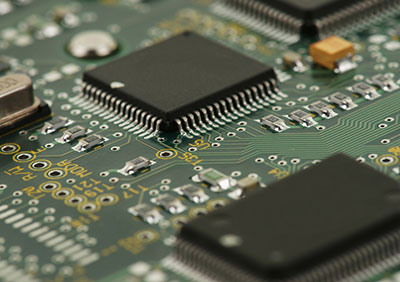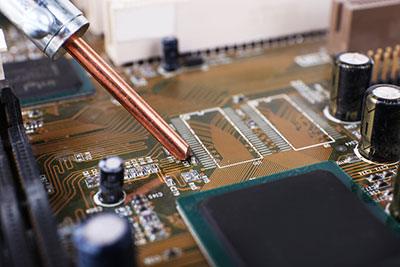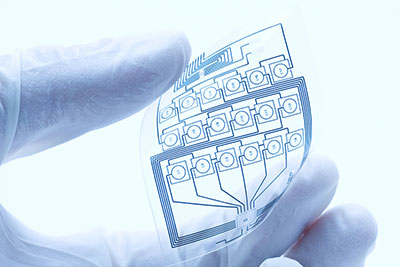High-temperature PCBs are sophisticated circuit boards, engineered to endure extreme heat, with materials (FR-4 or polymers) designed to withstand temperatures exceeding 170°C (338°F), ensuring unwavering performance under intense conditions. With advanced thermal stability and exceptional heat resistance, high-temperature PCBs offer a reliable solution for powering high-stakes applications in industries like automotive, aerospace, and beyond.
As traditional PCBs underperform at high temperatures, many electronics manufacturers now recognize the value of high-temperature PCBs. At OurPCB, we specialize in creating PCBs that endure extreme heat. Partner with us for all your PCB assembly needs and much more!
Contents
- Key Takeaways
- What is a High-Temperature PCB?
- Features of High-Tg and High Temperature PCBs
- Properties of High Tg Material
- High-Temperature PCB Applications
- Circuit Boards and Heat
- Choosing and Modifying Materials for High-Temperature PCBs
- Why is Heat Management Necessary for Circuit Boards?
- The Coefficient of Thermal Expansion and How it Relates to High-Temperature PCBs
- OurPCB: Advanced High-TG and High Temperature PCBs
- High-Tg & High Temperature PCB: FR4 Material & Price List FAQs
- What is high-heat solder called in electrical applications?
- What is the Tg value of FR4 PCB?
- What is the maximum temperature for FR4?
- What are the materials for high thermal conductivity PCB?
Key Takeaways
- High-temperature PCBs withstand temperatures above 170 °C, which is essential for heat-intensive electronics.
- Glass transition temperature (Tg) must exceed 170 °C to prevent failure in high-temperature applications.
- Heat management is critical, involving radiation, convection, and conduction to maintain PCB performance.
- Common materials like FR-4 and polyimide may not suffice; upgrading or modifying them is necessary for high temperatures.
- OurPCB provides services to modify existing materials for high-temperature compatibility, offering a cost-effective solution.
What is a High-Temperature PCB?
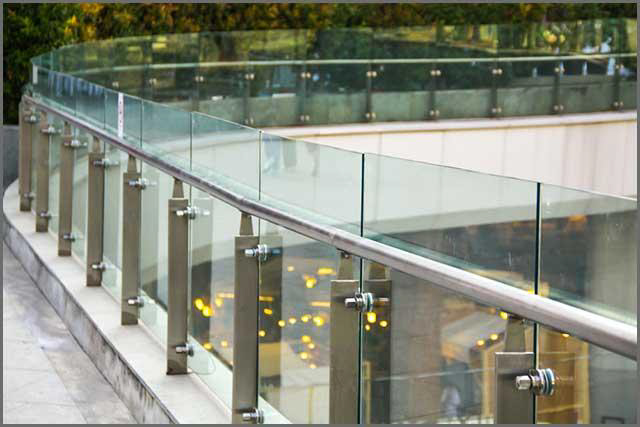
Image 1: Epoxy glass. Nearly all printed circuit boards, even high-temperature PCBs, are created from epoxy glass.
A high-temperature PCB contains materials that resist heat above 170 degrees Celsius. The base of these boards often includes epoxy glass, made from polymers. The critical temperature to note is the glass transition temperature (Tg). Different Tg levels correspond to various epoxy glass laminates, based on heat transfer in circuits.
Electronic devices that exceed 130 degrees Celsius need materials with higher Tg levels. Using inadequate materials can lead to melting and circuit failure. High-temperature PCBs are increasingly popular as they improve the effectiveness of electronics compared to traditional options.
Features of High-Tg and High Temperature PCBs
- High Glass Transition Temperature (Tg): Capable of withstanding temperatures above 170 °C
- Thermal Stability: Maintains performance under extreme heat conditions
- Advanced Materials: Uses materials like polyimide and BT resin for better heat resistance
- Efficient Heat Dissipation: Designed to manage and dissipate heat effectively
- Durability: Resists mechanical and electrical degradation over time
- Electrical Insulation: Provides excellent dielectric properties to prevent short circuits
- Moisture Resistance: Minimizes moisture absorption, which enhances reliability
- Flame Retardant: Meets safety standards like UL 94 V-0 for fire resistance
- Versatile Applications: Suitable for automotive, aerospace, and industrial electronics
Properties of High Tg Material
We’ve outlined the properties of high-Tg materials below:
| Property | Value |
|---|---|
| Glass Transition Temperature (Tg) | 170–225 °C |
| Thermal Conductivity | 0.2–0.4 W/m·K |
| Coefficient of Thermal Expansion (CTE) | 20–30 ppm/°C |
| Dielectric Strength | 20–30 kV/mm |
| Moisture Absorption | < 0.1% |
| Operating Temperature Range | -55 to 260 °C |
| Flame Resistance | UL 94 V-0 |
| Density | 1.8–2.2 g/cm³ |
High-Temperature PCB Applications
- Automotive Electronics: Used in engine control units and power management systems
- Aerospace Components: Essential for avionics and satellite systems that operate under extreme conditions
- Telecommunications Equipment: Supports high-frequency devices like amplifiers and routers
- Industrial Controls: Found in machinery that operates in high-temperature environments
- LED Lighting: Manages heat in high-power LED applications to ensure longevity
Special Offer: Get $100 off your order!
Email [email protected] to get started!
Circuit Boards and Heat
Given their varied uses, understanding heat transfer in circuit boards is vital for high-temperature applications. Heat dissipates through radiation, convection, and conduction:
- Radiation involves electromagnetic waves transferring heat passively.
- Convection occurs when heat moves to a fluid that absorbs it and rises to a heat sink.
- Conduction transfers heat directly between components through electrical currents.
All three methods work together in circuit boards, highlighting the need for materials that resist high temperatures.
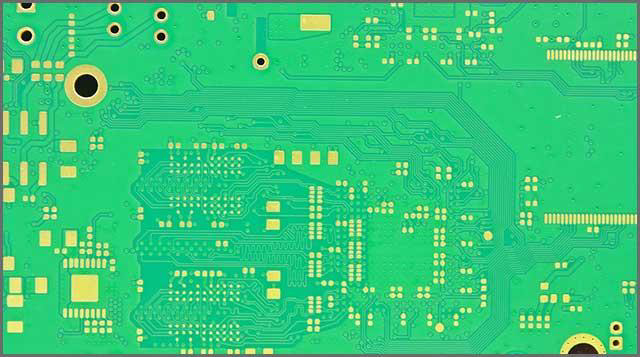
Image 2: Thermal pads on a circuit board. To understand the nature of high-temperature PCBs, it is necessary to know where heat transfer is throughout the board.
Choosing and Modifying Materials for High-Temperature PCBs
Common materials for PCBs include FR-4 and polyimide, but they may not withstand high temperatures well. In various high-demand applications including aerospace and automotive, upgrading these materials is essential for devices requiring higher thermal resistance. You can modify existing materials instead of purchasing new ones to save costs. For example, use unleaded solder paste to improve thermal performance in high-temperature environments.
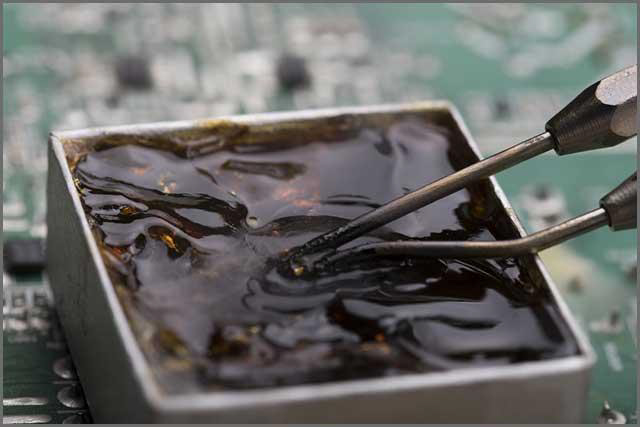
Image 3: Solder paste. The lead content of the solder paste used in PCBs greatly affects the kinds of temperatures it can withstand.
Solder paste holds everything on a circuit board together. If it melts, components can fall off of the board, and the entire circuit can fail.
Getting your solder paste ready for high-temperature PCBs has a quick fix. All you need to do is assemble your circuit boards with unleaded solder paste, or at least solder paste that contains very low levels of lead. Altering the design is another option for modifying materials to make them ready for high-temperature environments.
Why is Heat Management Necessary for Circuit Boards?
Heat management is crucial in any PCB design to prevent component failure due to expansion from heat. When parts expand excessively, they risk breaking down or malfunctioning. Effective heat management strategies can minimize the need for high-temperature materials by controlling thermal effects during operation.
Another factor influencing PCB temperatures is oxidation, which can affect PCB temperatures. The majority of PCB assemblers tend to overlook this issue. However, if the oxidation can be meticulously micromanaged, then precise control over heating should also be achievable.
Most PCBs contain dielectric materials that are covered by copper laminate. This prevents oxidation from rising temperatures. If the worn or dielectric material does not cover the copper laminate, the dielectric materials will oxidize much faster from the heating process.
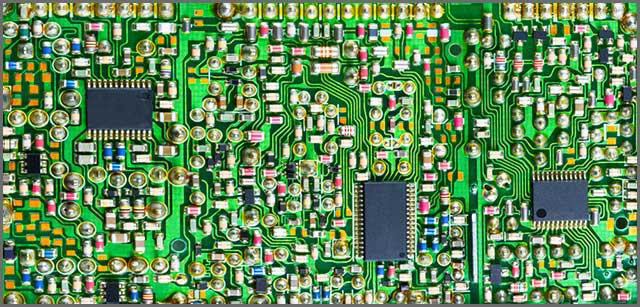
Image 4: Components on a circuit board. All of these expand when their dielectric layers are heated.
The Coefficient of Thermal Expansion and How it Relates to High-Temperature PCBs
Thermal expansion occurs when PCB components experience rising temperatures. The coefficient of thermal expansion (CTE) measures how much materials expand with temperature changes. Ideally, the CTE values of dielectric layers should match those of laminated copper to avoid stress during heating.
There is no avoiding the thermal expansion that takes place when components and materials in PCBs experience rising temperatures. However, it is possible to measure thermal expansion.
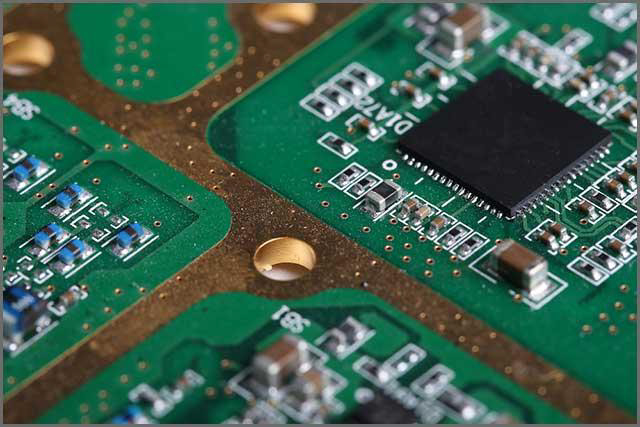
Image 5: Copper laminate. Make sure your CTE calculations match the calculations you get when measuring your dielectric layers.
OurPCB: Advanced High-TG and High Temperature PCBs
High-temperature PCBs are essential for modern electronics that generate significant heat. They provide durability and performance where traditional PCBs fail. As technology advances, the demand for these specialized boards will only increase.
If you’re ready to improve your electronics with high-temperature capabilities, consider modifying your existing materials. OurPCB offers expert services to help you upgrade your current components for better heat resistance. Contact us to receive an instant quote and take the first step towards superior thermal management in your projects.
High-Tg & High Temperature PCB: FR4 Material & Price List FAQs
What is high-heat solder called in electrical applications?
High heat solder, often used in PCB assembly for high heat resistance, is commonly referred to as lead-free solder. It provides dimensional stability and is essential in PCB fabrication processes that involve high-Tg PCBs. Supplier brands often include this solder type in their PCB products designed for advanced PCB applications.
What is the Tg value of FR4 PCB?
The Tg PCB value of an FR-4 PCB typically ranges between 130 and 180 °C, depending on the laminate material used. A high-Tg PCB has a low CTE, improving dimensional stability during PCB manufacturing and usage.
What is the maximum temperature for FR4?
The max temp in PCB applications for FR-4 material is typically around 130 °C for standard PCB or up to 180 °C for high-Tg PCBs. Its dimensional stability and conductive properties are maintained within this range, making it a versatile substrate. For multilayer PCB fabrication, the board manufacturer must select a PCB material that matches the thermal requirements of the PCB board.
What are the materials for high thermal conductivity PCB?
Materials used for high thermal conductivity PCB include FR-4 material, ceramic, aluminum, and copper-based substrate options. These circuit board material types are chosen for their superior conductive and high heat resistance properties, ensuring reliability in advanced PCB designs. Leading source brands offer low CTE laminate material optimized for PCB manufacturing and multilayer stackup applications.
Back to Top: High-TG & High Temperature PCB: FR4 Material & Price List
Special Offer: Get $100 off your order!
Email [email protected] to get started!





